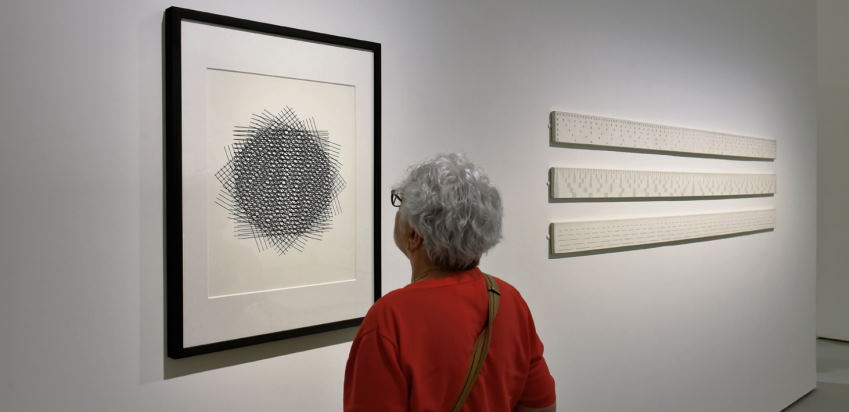Have you ever wanted an outlet for your creative energies? If so, then you should explore the world of conceptual art. Conceptual art is a type of modern art that focuses not on producing physical objects as its end product but rather ideas and concepts behind the work. In other words, it centers around using different types of media to express unique ideas or thoughts. Some of today’s most renowned creatives have embraced this form of visual expression to get their thoughts out into the open without having to restrict themselves artistically. By cultivating your understanding and appreciation for conceptual art, you can tap into this powerful source of creativity, sparking new ideas and fuelling innovation throughout all areas life!
The evolution of conceptual art
Each form allows artists to explore a particular idea or concept in a unique way and convey a message through visual expression. Conceptual art is often created to challenge accepted notions of what constitutes art and the traditional means by which it is displayed. It can be used as a tool for social and political commentary or simply an exploration of the abstract nature of reality. As more people become exposed to conceptual art, it continues to evolve into an ever-changing medium that pushes boundaries and creates dialogue between creators and viewers alike. By its very definition, conceptual art forces us to look at things differently and encourages us to think outside the box when considering our own creative endeavors. Whether exploring the boundaries of what is considered ‘art’ or questioning traditional art forms, conceptual art has helped open our minds and expand our creativity.

In conclusion, conceptual art is an ever-evolving expression that encourages us to think outside the box and explore our creative potential. Through its exploration of abstract concepts and ideas, this genre of art has opened a new realm of possibilities for artistic expression. By pushing boundaries and challenging accepted notions of what constitutes ‘art’, conceptual art has enabled us to see things differently and encouraged us to explore beyond the limits of traditional modes of expression. As more people become exposed to this genre, it will continue to grow in popularity as well as influence, providing us with a more diverse range of creative opportunities.
As the medium and influence of conceptual art has grown, it provides an opportunity to explore our own creativity in new and exciting ways. Furthermore, the genre enables artists to unlock their potential for innovation and expression by encouraging exploration and experimentation. As a result, conceptual art will likely remain a powerful force in the world of modern art for years to come. Furthermore, its ability to challenge accepted notions of what constitutes ‘art’ and its unique expression, will ensure it remains at the forefront of artistic exploration. In summary, conceptual art is an ever-evolving form of expression that pushes boundaries and encourages creative thinking. Therefore, it will likely remain a powerful medium in modern art for years.
In conclusion, conceptual art is a vital form of expression in the modern art world and continues to evolve over time. It encourages us to explore our own creativity and challenge accepted notions of what constitutes ‘art’. Pushing boundaries and encouraging exploration and experimentation has enabled us to see things differently and open our minds to new realms of possibility. As more people become exposed to this genre, its influence will continue to grow as we discover exciting new ways of expressing ourselves through this ever-evolving medium. With its ability to challenge accepted notions of art and inspire creative thinking, conceptual art is certain to remain a powerful force in the art world for many years to come.

Incredible conceptual artists you need to know
- Yayoi Kusama: One of the most famous and influential contemporary artists of her time, Yayoi Kusama has been a leading force in avant-garde art since the 1960s. Using both painting and sculpture, as well as performance pieces, she creates immersive works that are often surreal and psychedelic in nature. Her signature dot pattern can be found throughout her work.
- Marina Abramovic: A pioneer of performance art, Abramovic is one of the most renowned living conceptual artists today. Her performances have ranged from physical endurance to audience participation, all with a purposeful intent to explore fundamental human connections between artist and viewer or subject and object.
- Joseph Beuys: An important figure in the postwar German avant-garde movement, Beuys was an activist and prolific artist who used a wide range of media, from sculpture to performance art. He often drew from nature in his works, using materials like felt, fat and honey to express ideas about society and politics.
- Mona Hatoum: Born in Beirut, Lebanon but based in London since 1975, Hatoum is a conceptual artist who explores powerlessness and displacement themes. She often uses everyday objects as her mediums – including furniture, clothing, maps and food products – to create both unsettling and powerful installations.
- Ai Weiwei: A Chinese artist known for his politically charged artwork that often involves installations and sculptures. His work explores themes of freedom of expression, civil liberties and political reform, making him one of today’s most renowned artists.
- Olafur Eliasson: A Danish-Icelandic artist who works with light, color and movement to create captivating installations that often explore environmental issues as well as the relationship between nature and technology. He is best known for his massive “Weather Project” at the Tate Modern in London, which featured a huge mirror reflecting light onto its surrounding walls.
- Yoko Ono: An avant-garde artist from Tokyo whose work spans painting, music, film, and performance art. Her pieces are often conceptual in nature and explore ideas of pacifism, feminism, and global warming. She is also famously known for her marriage to John Lennon and their works together.
